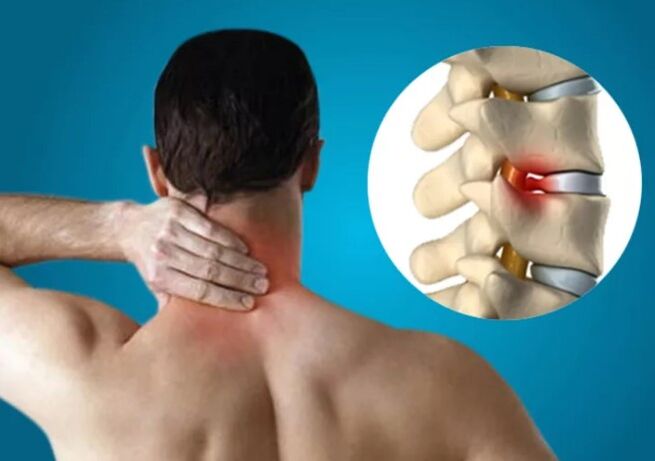The disease of the spinal column, accompanied by degenerative -dystrophic processes in the intervertebral discs of the cervical spine.
The causes of the cervical osteochondrosis
The most adverse causes that contribute to the degeneration of the vertebrae of the cervical spine are: Hypodynamia - small physical activity, improper and irrational nutrition, saline deposit in the fieldvertebrae, metabolic disorders, long -term work at the computer, constant driving of the car.

Risk factors are also: injuries and hypothermia of the cervical spine, hereditary factor, hormonal disorders, autoimmune diseases - rheumatism, systemic lupus erythematosus.
Symptoms of cervical osteochondrosis
The patient is observed in the field of Shea and the pine.Pain can also be given to the shoulder girdle and arm, also characterized by increased pain with minimal physical activity on the hand, cough, sneezing.As a symptomatic manifestation of the disease, the appearance of headaches is possible, general weakness, fatigue, dizziness, numbness of the limbs, fainting.With turns and tilting of the head, a person may have a crunch and severe pain in the neck.Other manifestations are possible - noise in the ears, a decrease in visual acuity, hearing deterioration, heart pain.
Diagnosis of cervical osteochondrosis
It will be necessary to consult a orthopedist or neurologist.For diagnostic purposes, the patient is examined and survey, X-ray is performed in several projections, if necessary, magnetic resonance scanning and MRI diagnostics of the cervical zone.
Treatment of cervical osteochondrosis
The disease requires prolonged, systematic and phased treatment.The main therapy is aimed at eliminating the pain syndrome, as well as the fight against the inflammatory process in the lesion zone.
Prevention of cervical osteochondrosis
Healthy lifestyle, full nutrition and regular physical activity, ensuring the proper organization of the workplace, as well as the regime of labor and rest.























